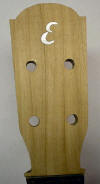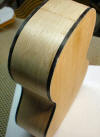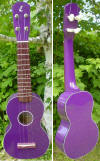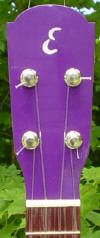Click on pictures to see larger images
I settled on Purple Lacquer with black and white plastic bindings and sound hole trim. The fingerboard and bridge are purpleheart. The nut and saddle are bone. The headstock inlay and fingerboard markers are pearl. The body was made from straight grained quarter sawn maple, and the neck is mahogany.
Note the wooden lady bug that you can see through the sound hole.



















